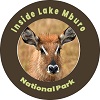When someone talks about the Ankole culture what immediately comes to your mind are the Banyankole people of Ankole who speak Runyankole. Then the Nkore region who belong to ethnic group of Bantu kingdom but are mainly found in the western and southwestern parts of Uganda.

In early years, the Ankole kingdom used to be ruled by a king who is referred to as ‘Omugabe’ and in Runyankore language. This was before kingdoms were abolished in 1967 by the government of President Milton Obote then. Since then, the Ankole kingdom has never been restored officially.
Administration of the Ankole Culture
Originally Ankole was divided into ten counties whereby they are now divided into various political constituencies. The counties originally included Kashari, Isingiro, Rwampara, Nyabushozi, Ibanda, Shema, Kajjara, Bunyaruguru, Igara, and Buhweju.
Abagabe (kings) used to come from the royal ‘Bahinda’ clan, and the king (omugabe) would be helped or assisted by the local chiefs under the main minister known as ‘Enganzi’. The ‘Enganzi’ was the only person or chief that could be allowed to enter the king’s rooms at any time as some of the palace’s rules and regulations were indicating. One of the main roles of the chiefs was to regularly hold courts to resolve minor conflicts in the palace or in the kingdom.
Every homestead was supposed to give out one (1) cow as a taxation and this could be done every after a year. Agents could be the head of the operations when they are taxing. History tells us that the Ankole kingdom was ruled by a total of 23 kings and a few of them were buried in Nkokonjeru – the Ankole Royal Tombs.
The language spoken by the Banyankole is known as the ‘Runyankore’ belonging to the Bantu ethnic group. The pastoral Banyankole are mentioned as the ‘Bahima’ and one person of this group is regarded as a ‘Mu hima’, while the agricultural Banyankole are referred to as ‘Bantu’ while one person is regarded as a ‘Muiru’.
Social life of the Ankole people
In early days, the staple food of the Banyankole was millet though it had been complimented with Banana (matooke), potatoes and cassava. Millet and meat used to be prepared on important occasions whereas the likes of potatoes and cassava used to be common food for daily meals. This was the food for the common ‘Bairu’ people who were known as agriculturalist, while the common food for the Bahima used to be blood called ‘enjuba’ and milk from the cattle.
When it comes to marriage, the Banyankole have upscale cultural tradition called ‘Kuhingira’ – which is the pre-wedding ceremony, otherwise known as the introduction ceremony. It is where the bride’s family exchanges gifts with the groom’s family, as a token of appreciation. During this ceremony they have the likes of ‘Kateraruume’ – which means somebody who will remove the dew from path. So, this Kateraruume works as a negotiator between the two families.
